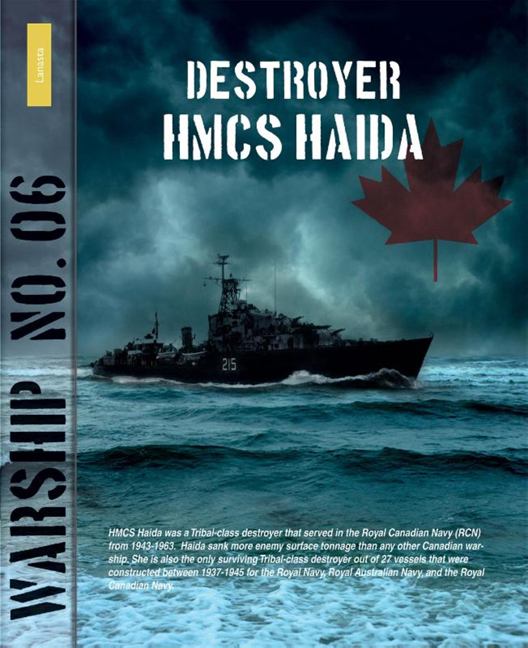Book contents
Introduction
Published online by Cambridge University Press: 03 April 2024
Summary
In 1940 it was decided to order a number of Tribal class destroyers for the Canadian navy from British yards. These ships were ordered from Vickers- Armstrongs (Tyne) in Great Britain.
The reason was that Canada did not have sufficient skilled workers to build these ships and it was virtually impossible to get sufficient professional support from Britain. Contrary to the Australian government which had ships built on their own yards. The order for the first two ships was placed at the beginning of 1940 followed for the next two by the end of that year. In June 1941 another two vessels were ordered but this time from the Halifax Shipyard. The engines were supplied by J.Inglis & Co. A final two were ordered from the same yard in 1943. The last four ships were finished after the end of WWII and therefore not see active duty in this period.
Tribal destroyer
The Tribal or Afridi class destroyers were built for the Royal Navy, Royal Canadian Navy and Royal Australian Navy. Originally conceived as a failed design for a light fleet cruiser the Tribals evolved into fast, powerful destroyers with greater emphasis on guns over torpedoes than previous destroyers in response to new designs by Japan, Italy, and Germany.
The Tribals were liked by their crews and the public due to their power. Often becoming symbols of prestige while in service.
As some of the Royal Navy's most modern and powerful escort ships, the Tribals served with distinction in nearly all theatres of WWII.
Because the first ships were not ordered until 1940 use could be made of the hard lessons that had already been learned during wartime by the British ships as well as what should be demanded from a destroyer. ‘Improved technology could be implemented in the Canadian ships as they were built. For instance the air defence systems were too weak and this could be modified in the design.
The later hulls were strengthened during building as pounding at high speed in rough seas had weakened the earlier hulls, wich had to be stiffened during refits.
- Type
- Chapter
- Information
- Warship 6Destroyer HMCS Haida, pp. 2 - 52Publisher: Amsterdam University PressFirst published in: 2024



